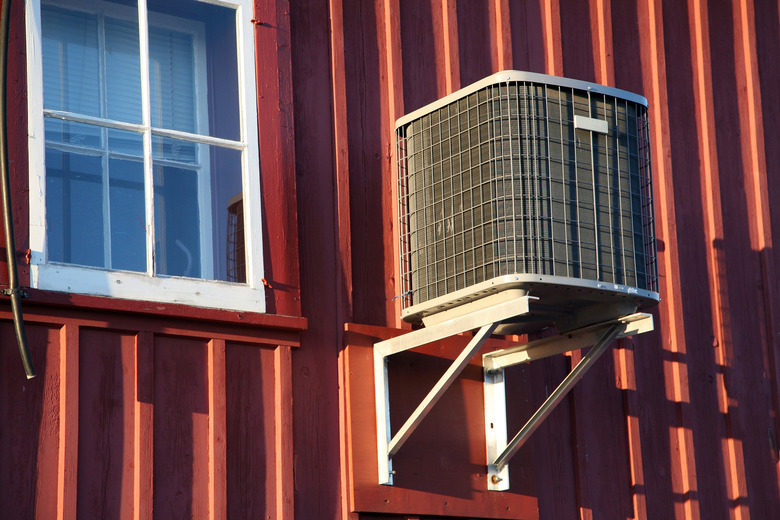How Do You Convert HSFP To COP?
Heating seasonal performance factor (HSPF) and coefficient of performance (COP) are both ways you can measure the efficiency of a heat pump. HSPF compares the output in British thermal units or BTU to the input in watt-hours. You can find the COP, by contrast, by dividing the amount of heat extracted from the cold reservoir by the amount of work it took to transport this heat. Since both numerator and denominator are in joules, COP is unitless. You can change the units to convert from HSPF to COP.
Step 1
Write down the HSPF for your heat pump. For example, 8 BTU/watt-hour.
Step 2
Multiply the value for your heat pump by 1055.1 joules/BTU. In the example, 8 x 1055.1 = 8440.8 joules/watt-hour.
Step 3
Divide the result by 3600 joules/watt-hour. In the example, 8440.8/3600 = 2.34. This is your COP. Note that it is unitless and represents a seasonally averaged coefficient of performance, so you should bear both factors in mind when working with this number.
References
- Engineering Toolbox: Performance and Efficiency Terminology
- "Physics for Scientists and Engineers"; Richard Wolfson, et al.; 1999
- Energy Savers: Air Source Heat Pumps
Cite This Article
MLA
Brennan, John. "How Do You Convert HSFP To COP?" sciencing.com, https://www.sciencing.com/convert-hsfp-cop-10043176/. 24 April 2017.
APA
Brennan, John. (2017, April 24). How Do You Convert HSFP To COP?. sciencing.com. Retrieved from https://www.sciencing.com/convert-hsfp-cop-10043176/
Chicago
Brennan, John. How Do You Convert HSFP To COP? last modified March 24, 2022. https://www.sciencing.com/convert-hsfp-cop-10043176/
